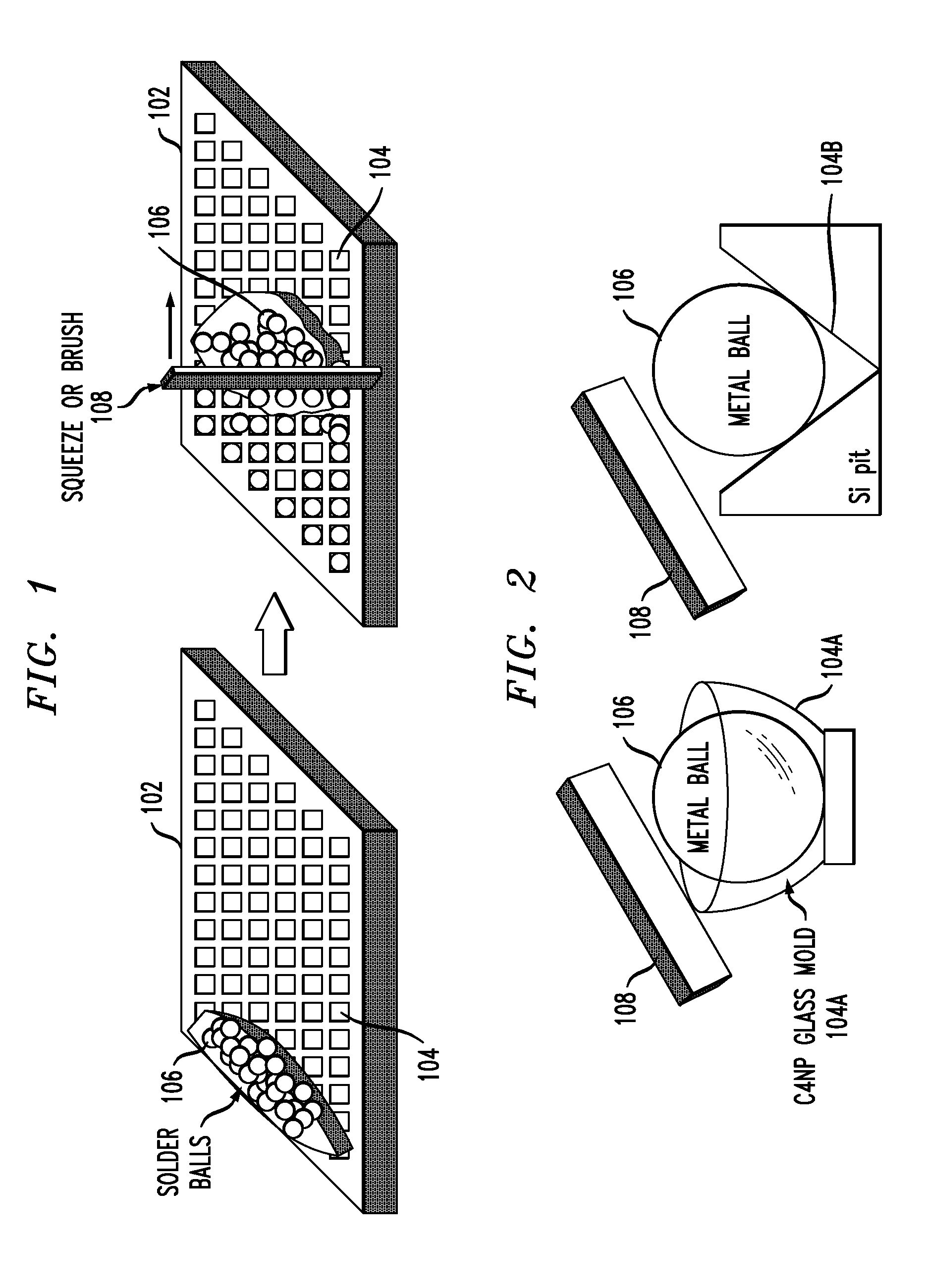Techniques for arranging solder balls and forming bumps
a technology of solder balls and bumps, applied in the field of electrical and electronic arts, can solve the problems of inability to apply screen printing methods for fine pitch, inability to handle wide alloy range of electroplating methods, and inability to apply electric current induced composition control to fine pitch,
- Summary
- Abstract
- Description
- Claims
- Application Information
AI Technical Summary
Benefits of technology
Problems solved by technology
Method used
Image
Examples
Embodiment Construction
[0025]Current C4NP techniques require injection of molten solder. As noted, application of such techniques is limited for high-temperature cases, due to inability to find a suitable seal material. Aspects of the invention provide a method for arraying high melting temperature solder balls and forming solder bumps on a semiconductor device. The direct array of solder balls in the cavities of a mold plate, according to one or more embodiments of the invention, does not require any sealing materials (as in IMS). Accordingly, aspects of the invention provide techniques for placing high melting temperature solder balls into a C4NP mold plate to carry out a fluxless solder joining method.
[0026]With reference to FIGS. 1 and 2, a current C4NP mold plate 102 could be directly used for the array of solder balls 106; however, to make good contact between the solder balls 106 and the input / output (I / O) pads on a semiconductor device after the array of solder balls is formed, the top surface of ...
PUM
| Property | Measurement | Unit |
|---|---|---|
| Fraction | aaaaa | aaaaa |
| Fraction | aaaaa | aaaaa |
| Fraction | aaaaa | aaaaa |
Abstract
Description
Claims
Application Information
 Login to View More
Login to View More - R&D
- Intellectual Property
- Life Sciences
- Materials
- Tech Scout
- Unparalleled Data Quality
- Higher Quality Content
- 60% Fewer Hallucinations
Browse by: Latest US Patents, China's latest patents, Technical Efficacy Thesaurus, Application Domain, Technology Topic, Popular Technical Reports.
© 2025 PatSnap. All rights reserved.Legal|Privacy policy|Modern Slavery Act Transparency Statement|Sitemap|About US| Contact US: help@patsnap.com



